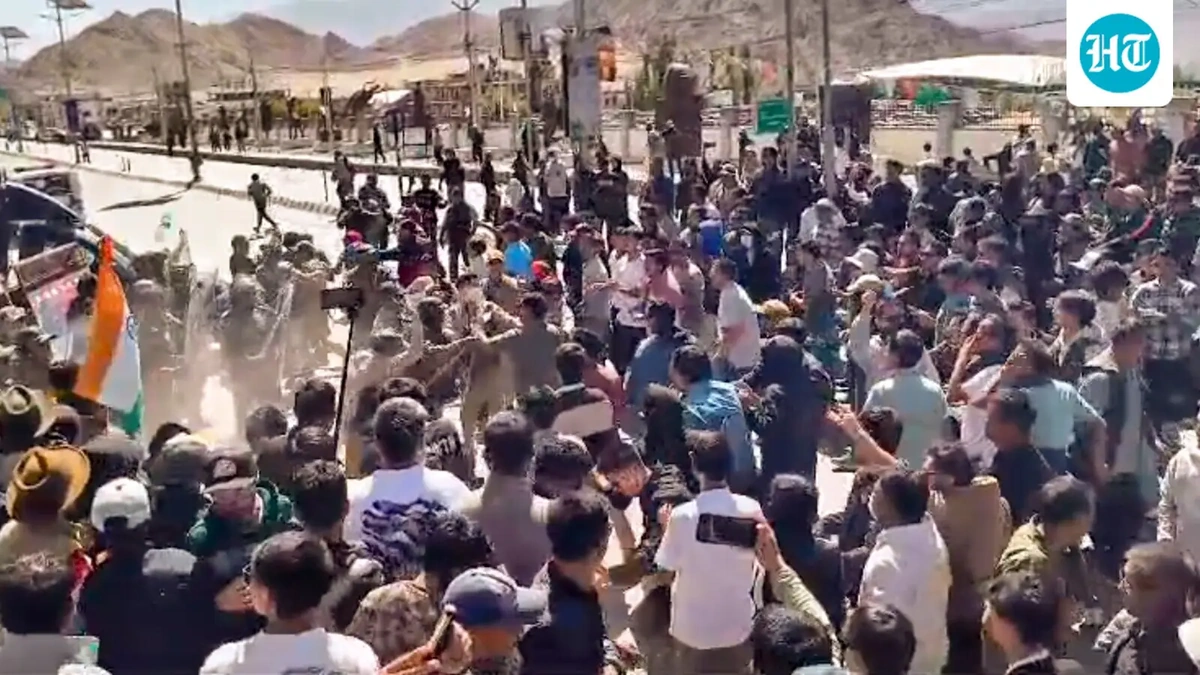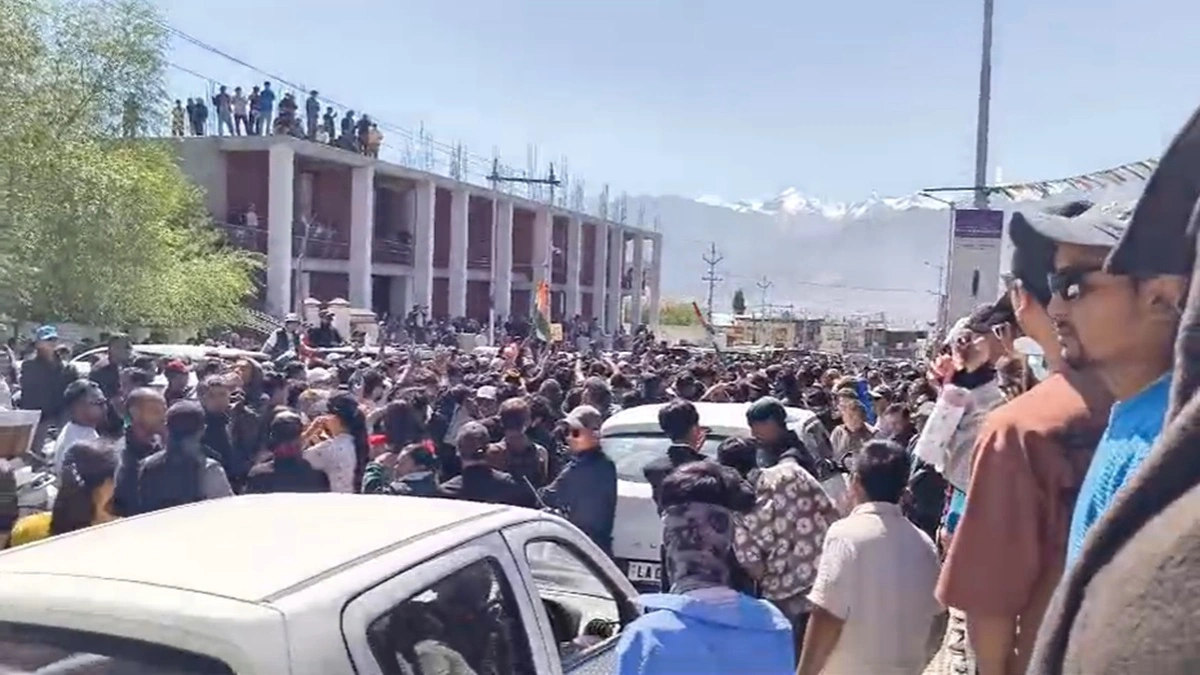Leh Ladakh Protest | Why Are Locals Demanding Statehood?
Ladakh, the land of high passes and stunning landscapes, is known for its serene beauty. But lately, there’s been a different kind of buzz in the air – the sound of protest . And it’s not just a small gathering; it’s a significant movement, a Leh Ladakh protest that has been gaining momentum. What fascinates me is, why now? What’s driving these peaceful yet determined people to take to the streets?
The Core Demands | More Than Just Land

The initial image might be that of a territorial dispute, but it’s much more nuanced than that. At the heart of the Ladakh demands are four key issues: statehood, constitutional safeguards under the Sixth Schedule, the establishment of a Public Service Commission, and the creation of two parliamentary seats. You see, when Ladakh was carved out as a separate Union Territory in 2019, there were celebrations. But the euphoria has faded, replaced by concerns about representation, identity, and, crucially, control over resources.
The Sixth Schedule is particularly interesting. It provides for the administration of tribal areas as autonomous regions. Now, Ladakh isn’t officially designated as a tribal area, but its culture and demographics are predominantly tribal. Locals fear that without constitutional safeguards, their unique way of life will be eroded. It’s like suddenly finding that your grandmother’s secret recipe book is now being mass-produced – the essence is lost.
The ‘Why’ Behind the Protest | Implications for the Region
The reason for protests in Ladakh boils down to a few key factors. Firstly, there’s the feeling of lost autonomy. As a Union Territory, Ladakh is directly administered by the central government. While this brought initial benefits like increased funding, it also means decisions are made in Delhi, often without adequate local input. This is why statehood is such a critical demand. Locals want their own legislature, their own voice in shaping their future.
Secondly, economic anxieties are playing a significant role. The influx of outside businesses and the fear of land alienation are genuine concerns. Imagine waking up one day to find that the local bakery you’ve cherished is now a branch of a national chain – that’s the kind of change people fear. Constitutional safeguards, they believe, will protect their economic interests and ensure sustainable development.
And let’s be honest, the creation of a Public Service Commission and additional parliamentary seats is about ensuring that local youth have opportunities and representation in governance. It’s about building a system that works for them, not one imposed from the outside.
How the Protests Are Unfolding | A Ladakh’s Voice
The protests have largely been peaceful, marked by demonstrations, rallies, and public meetings. Various socio-political and religious organizations have come together under the banner of the Apex Body and the Kargil Democratic Alliance to amplify their voice. The Apex Body, representing Leh, and the Kargil Democratic Alliance, representing Kargil, are the key players leading the charge. What’s fascinating is the unity across religious and regional lines. It speaks volumes about the shared sense of purpose.
These groups are meticulously documenting their grievances, presenting memorandums to government officials, and engaging with the media to raise awareness. They’re using democratic means to push for their demands, hoping that their voices will be heard in the corridors of power.
Remember that these aren’t just random acts of dissent; they’re carefully orchestrated campaigns aimed at bringing about lasting change in the region. The leaders are strategic in their approach to ensure constitutional safeguards for Ladakh .
The Government’s Response | A Balancing Act
The central government is in a tricky position. Granting statehood to Ladakh would set a precedent for other Union Territories. However, ignoring the demands could lead to further unrest and alienation. A common mistake I see people make is to assume that the government can simply impose its will. That’s rarely the case, especially in sensitive regions like Ladakh.
Negotiations and dialogues have been ongoing, but so far, there hasn’t been a breakthrough. The government has expressed willingness to discuss some of the demands, but statehood remains a sticking point. It is imperative that government must consider the Ladakh statehood demand .
According to various sources, the government is exploring alternative solutions, such as granting greater autonomy to the Ladakh Autonomous Hill Development Councils (LAHDC) in Leh and Kargil. But whether this will be enough to satisfy the protestors remains to be seen.
The Road Ahead | Finding Common Ground
So, where does this leave us? The Leh Ladakh protest is a complex issue with no easy answers. But what’s clear is that a solution requires dialogue, understanding, and a willingness to compromise. The people of Ladakh deserve a system that respects their identity, protects their interests, and empowers them to shape their own future. The government needs to recognize the legitimacy of their concerns and address them in a meaningful way. Only then can Ladakh truly achieve peace and prosperity.
Ultimately, the Ladakh situation highlights the challenges of balancing development with cultural preservation, and centralized control with local autonomy. It’s a reminder that governance is not just about administration; it’s about building trust and fostering a sense of belonging.
Here is a link to another articlefor you. Furthermore, check out this article as well for more information.
FAQ Section
What are the main demands of the Leh Ladakh protestors?
The primary demands include statehood for Ladakh, constitutional safeguards under the Sixth Schedule, a Public Service Commission, and two parliamentary seats.
Why are people protesting even after Ladakh became a Union Territory?
While the UT status brought some benefits, locals now feel a loss of autonomy and fear for their cultural and economic identity without proper safeguards.
What is the Sixth Schedule and why is it important to Ladakh?
The Sixth Schedule provides for the administration of tribal areas as autonomous regions. Ladakh, with its predominantly tribal population, seeks these protections to preserve its unique way of life.
Has the government responded to the protests?
The government has engaged in dialogues but has yet to concede on the demand for statehood. Alternative solutions are being explored.
How are the protests being organized?
Various socio-political and religious organizations, under banners like the Apex Body and the Kargil Democratic Alliance, are leading peaceful demonstrations and advocating for their demands.
What are the implications of Ladakh protests for the region?
These protests shows the importance of balancing regional development with preservation of culture and local autonomy. Furthermore, the government must respond to these issues to ensure a stable and secure future for the region.













